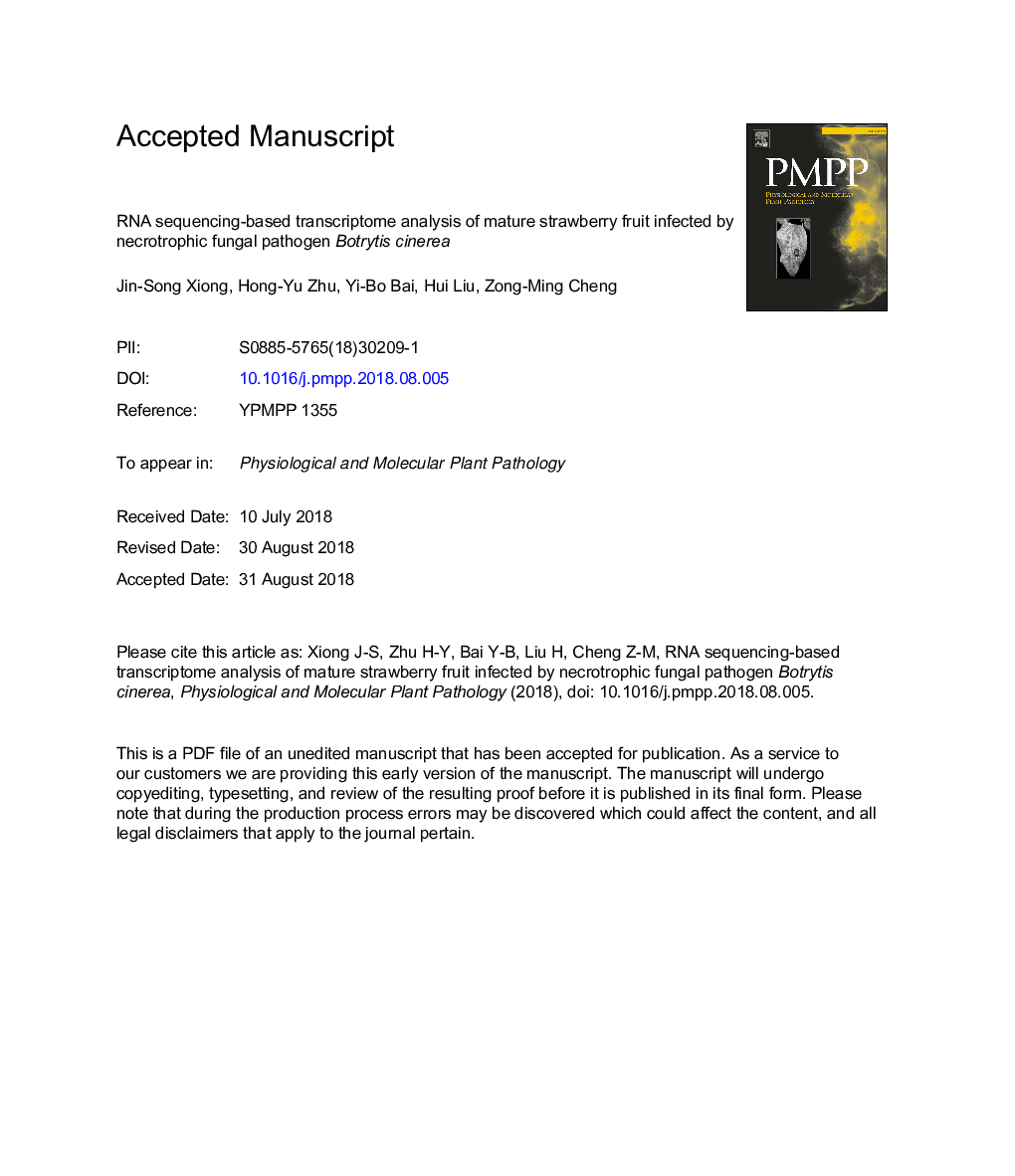| Article ID | Journal | Published Year | Pages | File Type |
|---|---|---|---|---|
| 11033735 | Physiological and Molecular Plant Pathology | 2018 | 36 Pages |
Abstract
Botrytis cinerea, the causal agent of gray mold disease, is regarded as the most impactful postharvest fungal pathogen, as it causes serious losses in fresh fruits, ornamentals, and vegetables worldwide. To understand the molecular defense mechanisms of the affected plants, we analyzed transcriptome using RNA sequencing (RNA-seq) of mature strawberry fruit that were infected by B. cinerea at 12, 24, and 48â¯h. Overall, 18 cDNA libraries were produced generating 923,482,642,150 base pair reads. A total of 1459 differentially expressed genes (DEGs) were identified (â¥2.0-fold change and FDRâ¯â¤â¯0.05), among which only 26 were down-regulated. The majority of changes in gene expression occurred 24â¯h after inoculation, before significant lesion development, suggesting that this is an important stage during B. cinerea infection. Further analysis revealed that the DEGs were predominately involved in pathogen recognition (pattern recognition receptors), signaling transduction (MAPK cascades, CDPKs), defense response (transcription factors, secondary metabolism biosynthesis, pathogenis-related), as well as different sorts of transporter encoding genes. These data provided a global insight into mature strawberry fruit-B. cinerea interaction and might be used for fruit postharvest pathogens and diseases management.
Related Topics
Life Sciences
Agricultural and Biological Sciences
Plant Science
Authors
Jin-Song Xiong, Hong-Yu Zhu, Yi-Bo Bai, Hui Liu, Zong-Ming Cheng,
